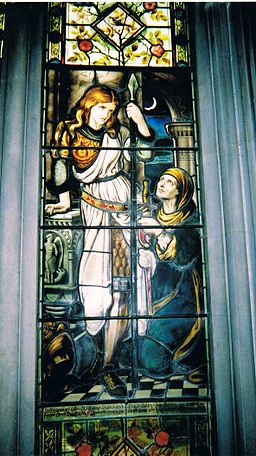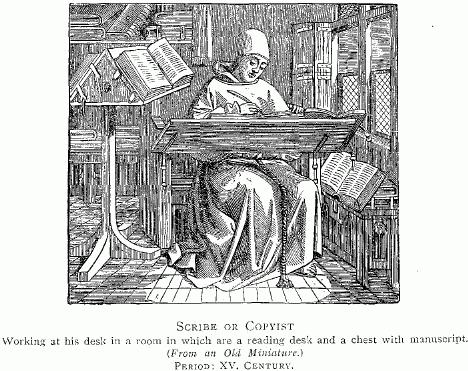
Stained glass of Britomart, embodiment of knighthood. Photo by C J Thompson, used under Creative Commons license
So, the U.S. military is
finally implementing redesigned body armor for women soldiers serving in Afghanistan. Previously, women had to wear body armor designed for men, which chafed painfully and restricted their range of motion. I’m glad to see this situation is finally being corrected.
This kind of problem is something that SF&F writers have often run up against when trying to portray women warriors. For most of human history, men have dominated the battlefield and have shaped the history, culture, and practice of war. There are relatively few recorded examples of women warriors to draw from, and virtually all of them were operating in a male-dominated martial culture. This can make depicting co-ed warfare challenging for authors who already have a lot on their plates in constructing an imagined world.
I’ll have more to say later about depicting women warriors in genre fiction, but for the moment I wanted to highlight one lesser-known historical example from the 11th Century CE. Sichelgaita (also spelled Sikelgaita), was the daughter of the Duke of Salerno in Southern Italy and a six-foot tall giant of a woman. Growing up in the troubled court of Salerno, she had the unusual freedom to study medicine, horseback-riding, and swordfighting. As a young woman, she entered a savvy marriage/partnership with the Norman adventurer Robert “the Weasel” Guiscard, who was busy conquering southern Italy at the time.
Sichelgaita quickly became the Weasel’s principal political and military adviser, helping him negotiate with the Italian lords and smoothing things over with the Pope, who was still sore about the time the Weasel captured his predecessor. But Sichelaita did more than just advise the Weasel–the two of them strode into battle side-by-side. When the Norman line began to buckle during the Weasel’s invasion of the Byzantine Empire, it was the wounded Sichelgaita who bellowed for the army to “act like men” and led the counterattack that won the day.
There are outstanding women like Sichelgaita throughout history who despite the prejudices of their time accomplished great things in art, politics, scholarship, and warcraft. They should be as inspiring to writers as any of their male contemporaries. (And anyone looking for a swashbuckling fantasy antihero should research Robert Guiscard, whose varied exploits included capturing one Pope and rescuing another, founding what would become the Kingdom of Sicily, and twice defeating the Byzantine Empire on the fields of Greece.)
To bring things full circle, just as fact can inform fiction, fiction can inform fact, as in the case of the military’s redesigned body armor, which looked to Xena: The Warrior Princess for inspiration on designing functional armor for women.







